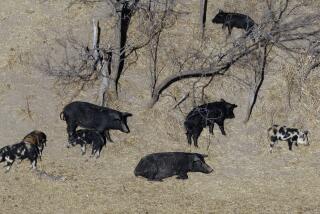Cricket farmer on eating insects: ‘Wow, this is a better way to go’
As a third-generation cricket farmer in West Monroe, La., Jack Armstrong has seen the family business evolve. When his grandfather started it in the 1940s, most of the crickets were sold for bait. His father began selling crickets as food for iguanas, bearded dragons and other exotic pets. Now, Armstrong is taking the business in a new direction: breeding insects for people to eat.
Though only a small fraction of the roughly 12 million crickets Armstrong sells a week end up on people’s plates now, he’s hopeful that interest in edible insects will rise. He explained why in a recent interview with The Times.
It’s about planning for the future: By the time his grandchildren take over the company, crickets for human consumption could be the most lucrative part of the business, he says.
How long have you been selling crickets for people to eat?
The big push on edible crickets for human consumption has probably been about the past few years. It started jumping from a novelty item sold in novelty stores to companies asking, “Can we make energy bars? Can we make chips?”
The bigger customers that we’re selling to have been demanding that they want to buy 18 to 20,000 pounds of crickets at a time.
Are you in favor of people eating insects?
We have no qualms about eating crickets.
The U.S., and much of Western Europe too, are so far behind the rest of the world. Most of the rest of the world, they’re used to eating insects as a great source of protein.
So what’s holding us back?
It’s more about people being squeamish over insects. If people would research it, then they’d find out, “Wow, this is a better way to go.”
Do you eat crickets yourself?
When we go to trade shows, there will be a few crickets eaten and all. That’s not our normal diet, but there’s nothing wrong with it.
Do you think the demand for edible crickets will grow?
We’re cautiously optimistic. We’re optimistic enough that we just spent 35 grand on a big walk-in freezer [to house edible crickets]. It’s a new industry that’s coming of age.
This interview was edited for length and clarity.
Follow me on Twitter @sasha_hl and “like” Los Angeles Times Science & Health on Facebook.






